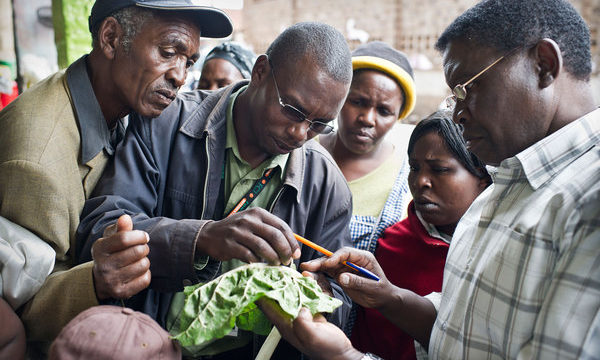Contributed by Roger Day, CABI

Photo: KEPHIS
An “experimental item” added to the agenda of the 2014 Commission for Phytosanitary Measures (CPM) was reports of successes and challenges in implementing the International Plant Protection Convention (IPPC). Each year a couple of countries (or Contracting Parties in the jargon) give a brief presentation, and first up at this year’s CPM11 was Kenya. Hellen Langat spoke on behalf of the Kenya Plant Health Inspectorate Service (KEPHIS), the National Plant Protection Organisation (NPPO).
Together with the University of Nairobi, KEPHIS launched the Centre for Phytosanitary Excellence (COPE) in 2010, funded by the Standards and Trade Development Facility (STDF). Since then COPE has trained over 700 public and private sector stakeholders from East and Southern Africa on the practical application of International Standards for Phytosanitary Measures (ISPMs). Horticultural exports is a common focus, something Kenya knows a fair bit about with its billion dollar horticultural export industry.
Another success is the Plant Import Quarantine and Regulatory System (PIQRS), an electronic system for managing plant imports into the county. PIQRS is more efficient and faster than the manual processes it replaces, making things easier for traders – very much in line with the World Trade Organisation’s new Trade Facilitation Agreement.

Photo: KEPHIS
KEPHIS has well equipped diagnostic laboratories. So it was an obvious choice as the Plant Health Regional Reference Laboratory for the Common Market for Eastern and Southern Africa (COMESA), as specified in COMESA’s SPS regulations. Devising practical ways to meet the needs of all COMESA’s countries remains a challenge.
From 12-16 September 2016 KEPHIS will host an International Phytosanitary Conference under the theme “Phytosanitary regulation for improved food security and trade facilitation”. This fits nicely with the IPPC’s themes for 2016 and 2017 of “Plant Health and Food security” and “Plant Health and Trade Facilitation” respectively. As Hellen point out, Kenya is also a great place for a holiday safari!
Related News & Blogs
The Formosan subterranean termite: a destructive force
Termites, numbering over 3,100 species worldwide, are infamous for their ability to wreak havoc on building structures and vegetation. The Coptotermes genus particularly stands out, containing the most termite pests, with 28 pest species. However, one…
19 July 2023



